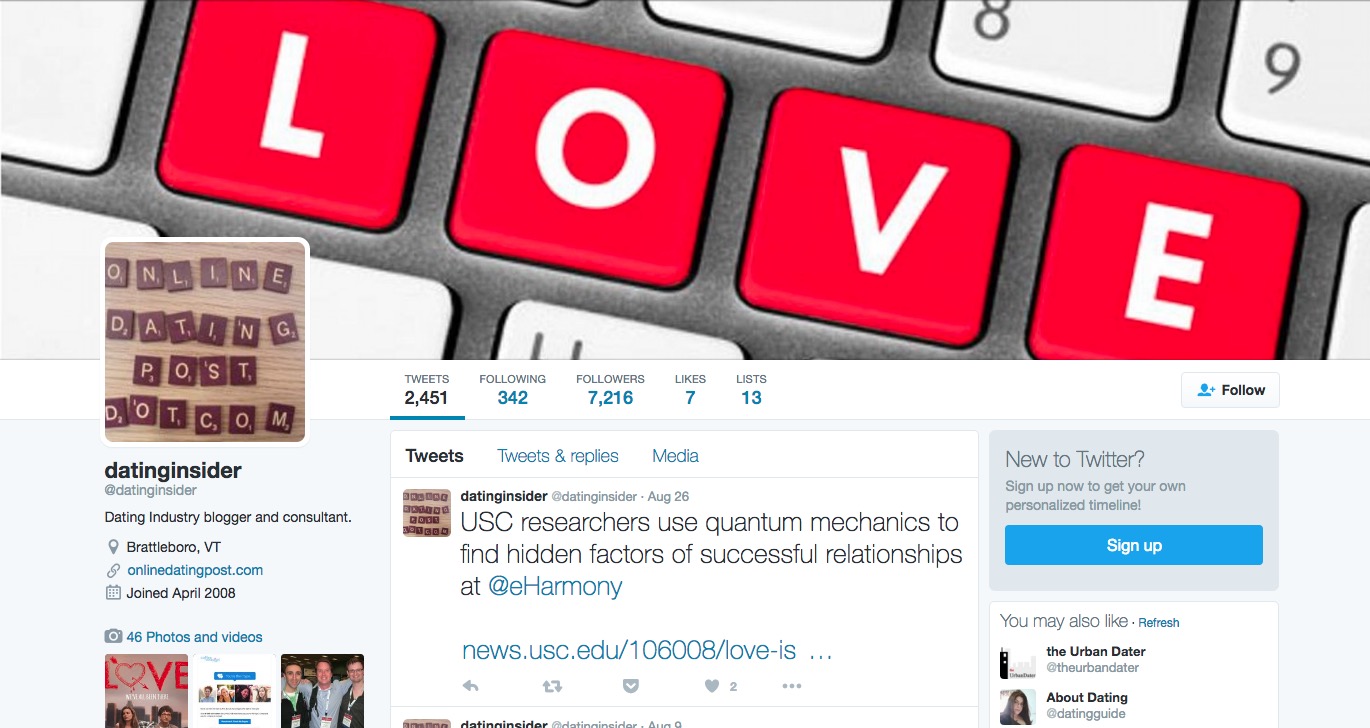For several years now, eHarmony has touted it’s many dimensions of compatibility. I’ve talked to people familiar with the infrastructure that eHarmony has developed, and it’s impressive.
OKCupid and PlentyOfFish should be mentioned here, as both companies, whether you realize it or not, have gone to great lengths to create systems to help us pick out our perfect match. Actually, what they do well is hide the people you’re not interested in.
Vendors like VisualDNA and IntroAnalytics came to the dating industry saying they can match people faster and more effectively than before. No thanks, says most large dating sites. Stunned silence.
Both companies have pilot programs and even a few parters, but while initial results have been promising, their WOW! moment has not yet occurred.
Someday it would be great to get a frantic call from a dating site saying, “They’re all gone, most of our members paired off and our traffic plummeted. And its all because our matching algorithm is so good.”
Why am I bringing this all up? Because I think it’s time for someone to throw everything we’ve got at a new matchmaking system that is orders of magnitude more effective and efficient than today current offerings.
30 million people try online dating each month. There are 110 million singles in the US. The US dating market, depending on who you talk to, is around a billion dollars or so. So that means, for argument’s sake, that the US dating market could be worth up to three billion dollars a year. There are two billions dollars of revenue out there for the taking, and most of the industry has absolutely no idea how to get there. They keep turning existing knobs and dials, when they should be creating an entirely new dashboard of tools.
Now that you see the immense opportunity, its time to talk about solutions. Specifically that the foundation to improve online dating efficiency are out there and its time for more dating sites to take advantage of them.
Twitter Open-sources the Home of Its Social Graph. Back in April, Twitter said:
Twitter today open-sourced the code that it used to build its database of users and manage their relationships to one another, called FlockDB. The move comes shortly after Twitter released its Gizzard framework, which it uses to query the FlockDB distributed data store up to 10,000 times a second without creating a logjam.
… Twitter’s newly open-sourced Gizzard tool seems to have promise, as well. By eliminating some pain from the often difficult sharding process, Gizzard makes it easier to build and manage distributed data stores that can handle ultra-high query volumes without getting bogged down. Like Google, Yahoo and Facebook before it, Twitter has played a role in evolving how we use the web, and software developed within its walls should be a hot commodity for present and future Twitter-inspired sites and products.
The writer at GigaOM wonders “if FlockDB and Gizzard will join the ranks of Hadoop or Cassandra as open-source solutions for managing data at webscale.”
Researchers from the University of Maryland and one from the University of Calabria in Italy, have created software that can find complex patterns in billions of bits of data in a matter of seconds — using cloud computing.
Researchers developed an algorithm that could take such a problem and split it up into pieces, parcel out those pieces to a cloud computing platform such as Amazon’s EC2, search for patterns and then pull the data back together. According to the paper, the team managed to perform “subgraph pattern-matching queries” on real-world social network data with more than 750 million “edges,” or connections between individuals, in less than a second. More recent results have shown this is possible with databases that have more than a billion edges.
This is super-exciting stuff and we’re just talking about this at a high-level (all I’m capable of, I need a tech writer for the blog). The algorithms required to mine and match social and behavioral data to create relevant pairings of singles still need to be built on top of these systems. Whether adapted from existing systems or something completely new, the algorithm is where its at and the dating industry is woefully behind in that department.
Perhaps Match will acquire IntroAnalytics, they can then repurpose the system across the IAC empire. The other scenario is that they and their closest competitors will continue to develop from within.
Whichever happens, better matches are around the corner, leading to the only thing singles care about, better first dates.
Search the technology category on this blog and peruse Google and you will find a lot more fascinating videos and articles about how companies are providing new layers of technology which can be used to improve the matching process.
Via Finding Patterns in Social Data a Big Problem — the Cloud Can Help.

